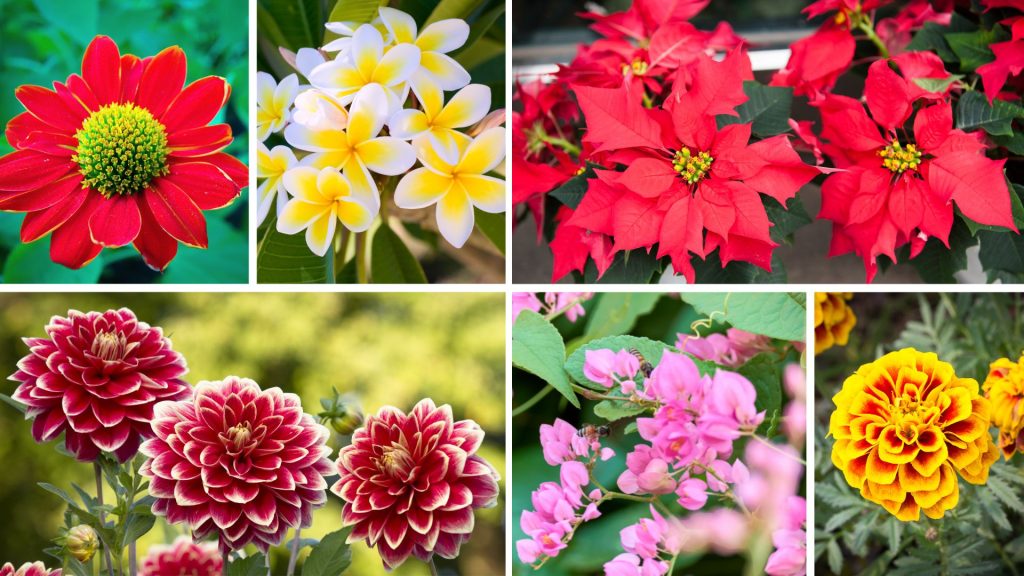Mexican plants are a different kind of natural wonder. This colorful country with beautiful landscapes and varied terrain is home to gorgeous flowers. Mexican flowers play a crucial role in many national festivals, and the locals are happy to grow beautiful home gardens.
You can find Mexican plants growing all over the country, from local gardens to ornamental landscapes. Some are located in the Chihuahua and Durango mountains, while you can find others in the meadows of Western Oaxaca. It is impossible to say which of the Mexican trees and shrubs or flowers is the most popular Mexican plant, although many people argue that poinsettia is the most recognizable. It is even used all over the world to celebrate the Christian season.
We have prepared a list of the most beautiful Mexico plants that would not leave you indifferent.
Mexican Flowers List
Cactus
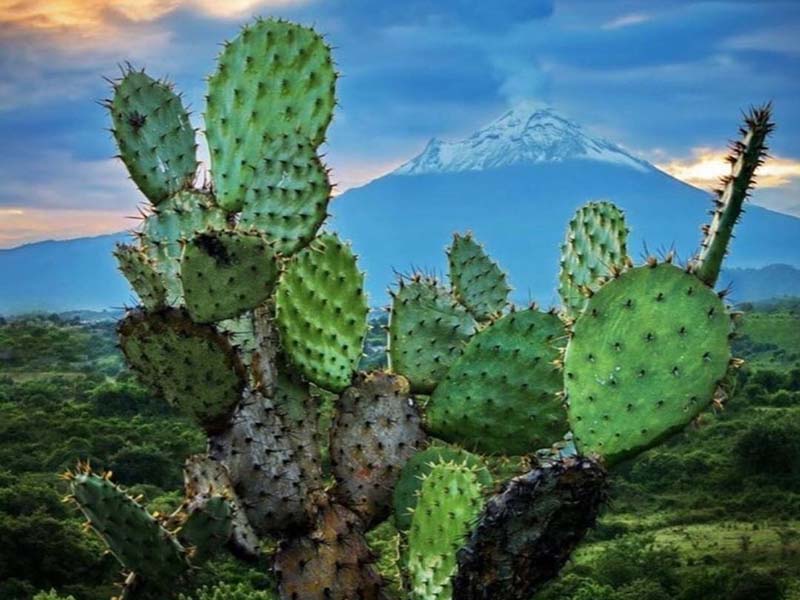
We couldn’t help but mention the humble thorny plant that Mexico is most associated with. You can find more than 150 varieties of cacti throughout the country. These plants grow everywhere: from the capital’s city center to the endless deserts of the northern territories. One of the most popular prickly pear cactus bears edible fruit. Along with the fruit, the cactus “pads” are also consumed.
Dahlia
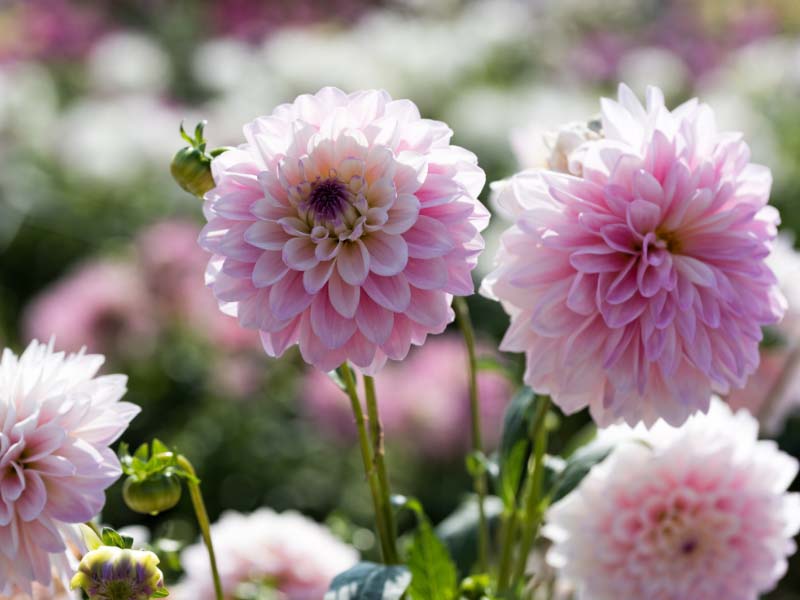
It is a Mexican national flower that even a novice gardener can grow. In ancient times, they occupied the best places in the gardens of the rich, and today you can admire them in almost every yard. The advantage of dahlias is the ease of growing at home and a long flowering period.
These flowers of Mexico with variegated inflorescence belong to a few flowers, the color gamut of which is so broad that it would take a whole day to describe it. Dahlia’s colors range from white to black and red. Due to the rich color range, you can plant dahlias in the entire garden without being afraid of monotony. These plants are subdivided by height: from 30 centimeters to two-meter giant flowers.
Mexican Sunflower
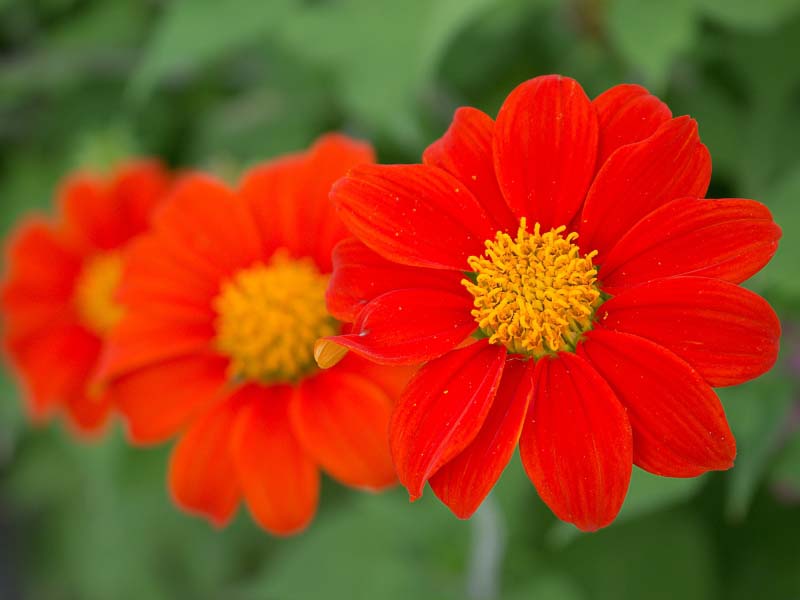
It is one of the most popular flowers native to Mexico. These Hispanic flowers resemble chamomile in appearance, and only it grows in the form of a bush and blooms in shades of yellow and red. Just one bush can produce over 100 flowers. It is believed to symbolize purity and loyalty.
Mexican sunflowers are prized because they can reseed themselves, even though these are only annuals. They can also withstand harsh growing conditions such as drought and poor soil.
Mexican Frangipani
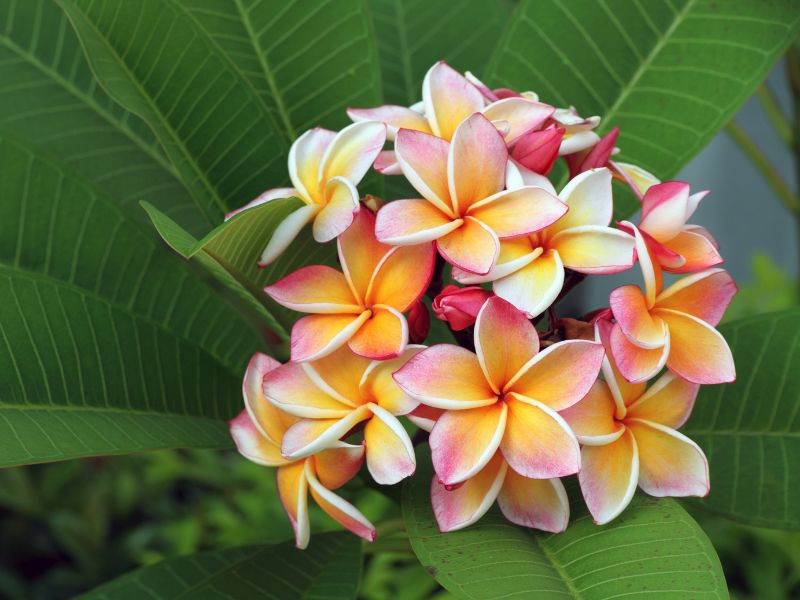
In nature, this native-to-Mexico plant is a vast tree 5-8 meters high, but at home, you can only grow a small flowering dwarf shrub. The shrub blooms several times a year. For this to happen, you need to create all the conditions: at least 6 hours of lighting, the use of feeding for flowering plants, and sufficient moisture.
The tree’s flowers have a delightful aroma that combines the scent of jasmine, spices, citrus, and gardenias. Due to its exquisite fragrance, the plant is often used to create perfume compositions. Nature has endowed the Mexican frangipani with a magical scent only to attract insects. They pollinate the flowers, but they are left without nectar because it is absent here. Thus, a flower deceives insects by carefully copying all the signs of flowers that produce nectar.
Coral Vine
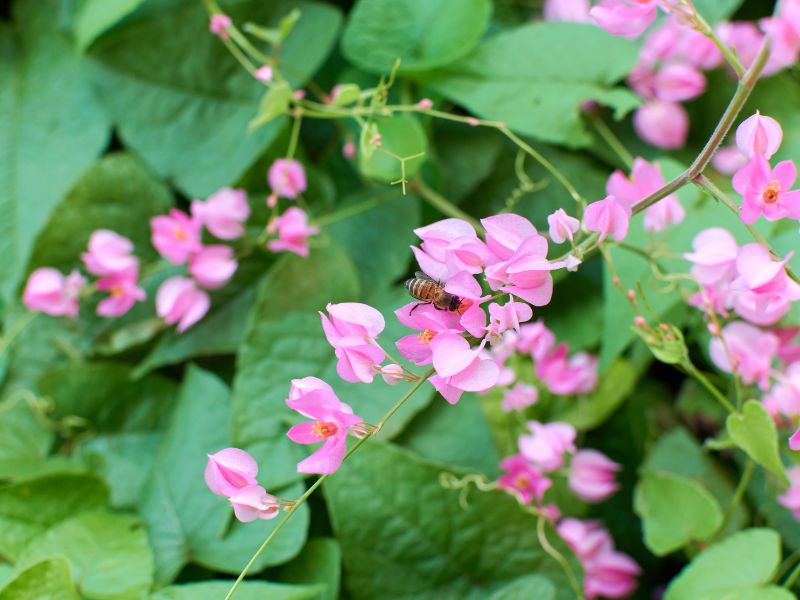
These beautiful Mexican flowers are also known as “Mexican lianas.” It is a vine with a solid and aggressive growth habit, to the point that it is considered invasive in some places, such as Florida. This evergreen plant grows in zones 9-11, but in other ones, it can also be grown only as an annual. In one season, it can reach up to 3 meters in length. This charming Mexican plant produces tassels with bright pink, white or red flowers. If the climate is warm enough, then it blooms all year round.
Due to its ability to grow quickly, it is an excellent choice to decorate an unsightly wall or fence. It would also look good growing around gazebos, arches, or trellises. This plant clings to anything within reach with its curly tendrils.
Places in full sun are preferable, but the plant can also adapt to partial shade. Coral vines can tolerate drought, but they prefer well-drained soil, which should always be slightly moist.
Pineapple Sage
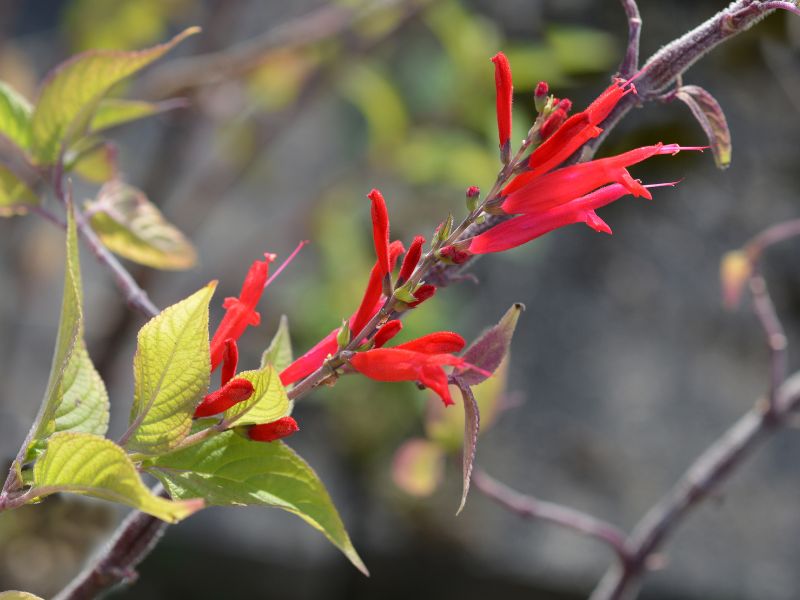
Our list of Mexican plants cannot fail to include this stunning shrub. Pineapple Sage is a fragrant sage from Mexico with a fruity leaf aroma reminiscent of pineapple. It is a shrub that can reach 1.20 m in height, or even more than one meter fifty if grown in the best conditions and a favorable climate. A perennial plant with woody stems at the base forms a bunch about a meter wide.
The pale green leaves are broad and covered with fine down. Prolonged, intense red, tubular flowers clustered in spikes at the top of slightly purple stems are mainly distinguished by the restrained green foliage.
Its decorative qualities make it an excellent plant. Feel free to grow it in pots to decorate your terrace and have it close at hand when cooking.
Poinsettia
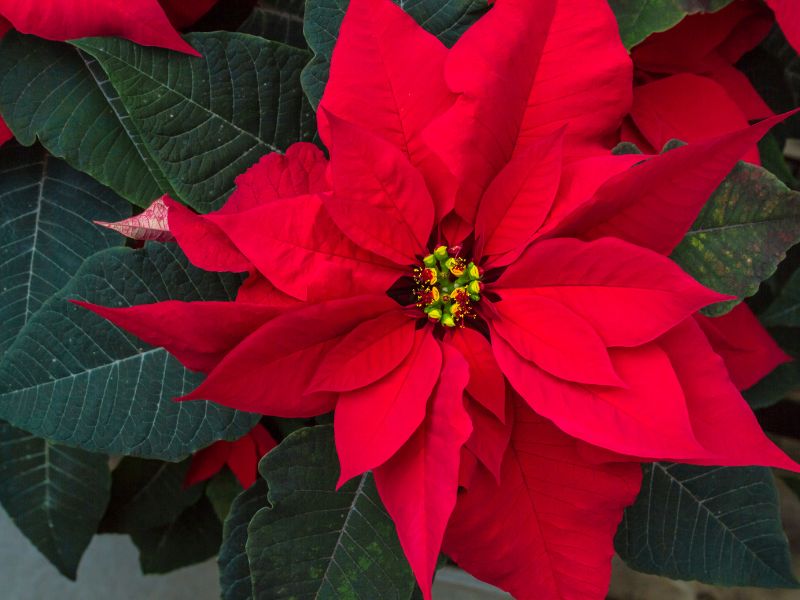
It is a beautiful evergreen perennial from the Euphorbia family. This Mexican shrub attracts attention with its bright leaves, which, like massive stars, surround the flowers. The plant blooms in winter and is often used as a cute Christmas present. It is believed that poinsettia attracts wealth and prosperity to the house.
Poinsettia is a spreading shrub. In the forests of Mexico, its height can reach 3-4 m, but indoor flowers are compact. The plant feeds on a fibrous rhizome. Poinsettia blooms in winter, with short daylight hours, and it lasts 2 to 6 weeks. The flowers are arranged in small rosettes and attract little attention, and Bracts make a bright accent. Contrasting star-shaped leaf rosettes rise above the central crown. Poinsettia seeds ripen in small seed pods. After flowering, the buds and part of the leaves fall off, and a dormant period begins.
Mexican Marigolds
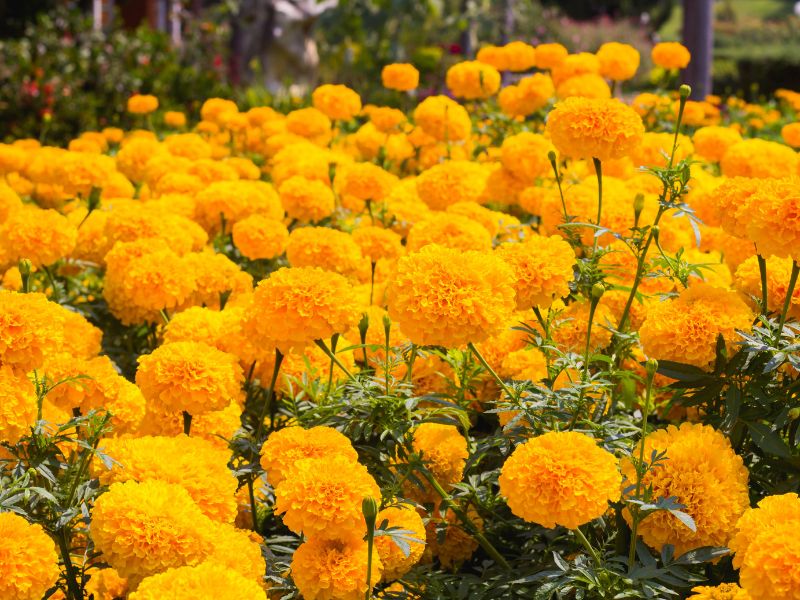
Mexican marigolds appeared relatively recently, but many gardeners have already fallen in love. Not everyone likes the smell of the usual marigolds, but the smell of this variety of flowers contains subtle notes of lemon. Mexican marigolds would be an excellent option for quiet and refined aroma lovers. The plant leaves are thin, their length does not exceed 8 cm, and their width is 3 cm. A master knitted them from fine openwork yarn from the side. And the flowers, “scattered” around the flower garden, resemble fireworks. The stems of the plants begin to branch out at the base. After Grownup, the bush takes on a spherical shape. Therefore, you would not have to work for a long time on the flower bed design. Plant height does not exceed 30 cm.
Ahuehuete

This tree is native to Mexico, although few have heard of it. However, it is better known as the Montezuma cypress outside of Mexico. It has an unusually thick trunk towards the base, which can be seen on young trees, and a wide-brimmed spreading shape. This Mexican tree grows throughout the country but mainly extends from southern Texas to Guatemala. It can often be found in various climates, from temperate to cold. Most often, it grows on the banks of multiple bodies of water. The tree grows quite quickly; it can grow up to 2 meters per year in good conditions.
Mexipedium Xerophyticum

It is an extremely rare orchid that only grows in Oaxaca. This Mexican flower has beautiful silvery green leaves and tiny, white flowers with pink accents. The orchid is framed by two petals that curve outward to resemble an inverted crescent. The flower usually grows directly on rocks and rocky crevices, preferring dry conditions. Mexipedium xerophytic requires indirect or filtered sunlight to grow.
Mexican Flowers All Around The World
Flowers from Mexico have conquered gardeners worldwide and are widely used at various national festivals (for example, Tlaxochimoco or Day of the Dead.) It is difficult to imagine Mexico without the colorful plants that adorn every alley of this vibrant, temperamental country. But if you do not have the opportunity to visit this colorful country now, you can create a small piece of Mexico right in your backyard by growing the above plants. Most of them grow well in our climate and are pretty easy to care for.


